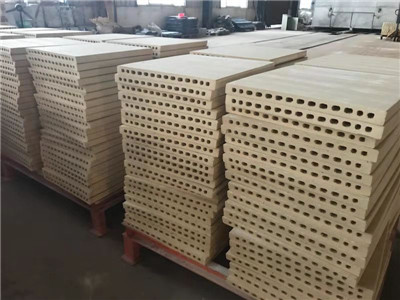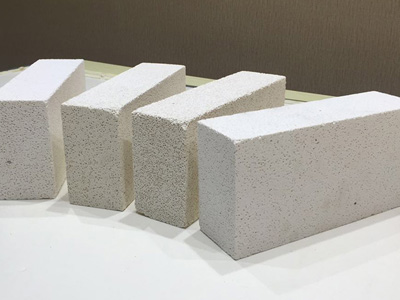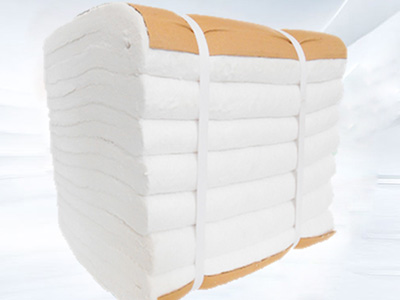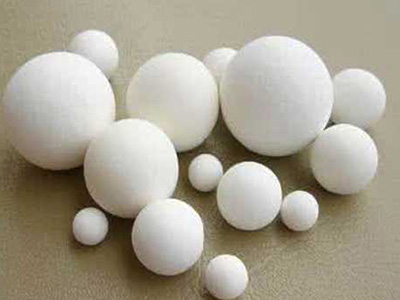Replacement of Checker Bricks in the Regenerator of Coke Oven
For coke ovens that have been produced for many years, the single and main walls of the regenerator will crack, melt, deform or even collapse under the action of temperature and other factors. The checker bricks are easy to be blocked, and even deform and melt at high temperatures. When these defects seriously damage the heating system, the regenerator should be renovated.
Refurbishment of the regenerator will cause the increase and expansion of cracks in the single and main walls due to cold air entering the room, so this is generally not done. In the case of forced renovation, the internal masonry should also be protected from damage, and corresponding insulation measures should be taken. It is also necessary to insist on the continuous operation to shorten the refurbishment time, and when conditions permit, coke oven gas should be used to supply heat to the furnace.
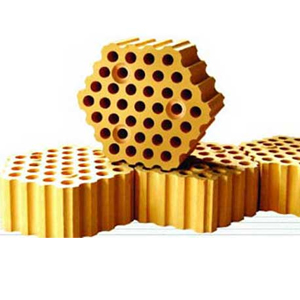
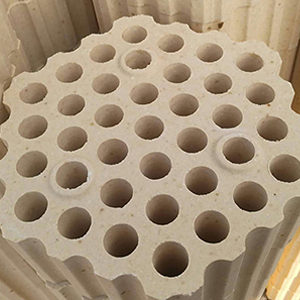
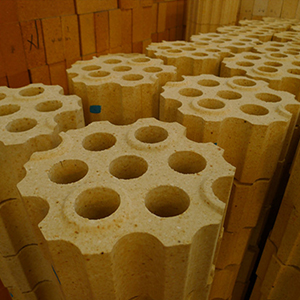
Sampling View of Checker Bricks in the Regenerator
Due to the long-term workload, the checker bricks in the regenerator of the coke oven will melt and creep. When the situation is serious enough to affect the normal production of the coke oven, it needs to be replaced.
First of all, from the perspective of the creep checker bricks taken out of the coke oven regenerator, the damaged checker bricks have expanded volume, the loose internal structure of materials, and blocked holes. The severely damaged parts are concentrated in the upper part of the gas regenerator, generally, no more than three layers of bricks and the upper layer is the most serious. Moreover, the upper part of each checker brick is more creeping than the lower part. A factory sampled and inspected the clogged checker bricks, and the changes are shown in Figure 1.
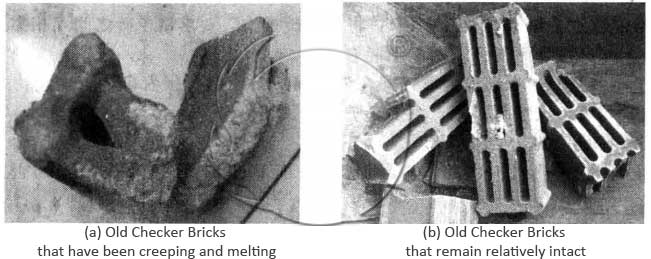
Figure 1 Sampling of clogged checker bricks in a factory
Replacement Measures of Checker Bricks in the Regenerator
Before construction, prepare all necessary tools and refractory materials and install temporary low-voltage lights. Use a special iron plate to cover the upper surface of the waste gas pan connected to the refurbished regenerator to prevent the scrapped bricks from blocking the exchange equipment.
In terms of production organization. During the repair, there will be one buffer furnace number adjacent to each other, and the furnace will not be drawn during the repair. The actual coking time of the repaired furnace number depends on the length of the repair time, the maturity of the coke cake, and the temperature of the combustion chamber. The coking time of the buffer furnace number is set at 36h, the second buffer furnace number is set at 30h, and the coking time difference between adjacent furnace numbers is more than 4h. In terms of furnace temperature management, the standard temperature for repairing furnace numbers and buffering furnace numbers should be lowered accordingly. If it is blast furnace gas heating, it needs to be temporarily stopped. In order to ensure that the furnace body in the combustion chamber area is not damaged, the adjacent units and coke sides are used at the same time, and the coke oven gas is intermittently heated, and the temperature should not exceed 1200°C. After the checker bricks are replaced, the coke oven gas is used to heat up for 2 to 3 hours when the temperature is raised, and then converted to blast furnace gas for heating. If there is no coke oven gas, the supply of blast furnace gas will be temporarily suspended during the maintenance period. The specific measures for the replacement of checker bricks in the regenerator are as follows.
- ①Before construction, compare the plan to be released. Select the coking time in the middle heat number, and remove the pressure measuring hole with a crowbar. For regenerators with heat shields and single (main) wall small furnace columns, the small furnace columns, beams, and heat shields should be removed before the masonry is removed. And close the corresponding blast furnace gas valve and the blast furnace gas valve on the adjacent machine and coke side. Disengage the mound rod from the exhaust gas stroke and adjust the opening of the exhaust plate flap.
- ②Pick off the wall tiles from the horseshoe cover, take out part of the checker tiles and continue to remove the sealing wall to the end. Hang the windshield above, insert an iron plate into the gap between the two layers of checker bricks under the replaced checker bricks, and block the chute with a thermal insulation fiber cloth.
- ③Use a single hook to remove the checkered bricks. If the checker bricks are tightly packed with the single and main walls or the checker bricks are melted together, the furnace head can be smashed with a crowbar and then pulled out, and the deep checker bricks can be smashed and taken out with a live joint flat shovel. As the checker bricks are pulled out, the iron plate gradually moves to the depths of the regenerator.
- ④ There is one layer of checkered bricks on the burner and fire channel, and wooden planks are laid on it, which is convenient for people to enter and remove. The checker bricks are stripped into a ladder shape, with 4 to 5 checker bricks per layer. All three layers of checker bricks above are required to be replaced.
- ⑤Before installing the checker bricks, clear out the broken pieces in the holes of the checker bricks. Gunning and repairing the cracks of the single and main walls, and using a multi-section blower to blow the checker bricks until the blower inspection is unblocked. When blowing, pay attention to the blowing hole not to face the single (or main) wall, but to move slowly from the outside to the inside and from the inside to the outside of the checkered brick channel. Strip off the checker bricks at the bottom of the burner and clean the dirt in the grate bricks and the small flue.
- ⑥ Put the slideway into the heat storage room and push the checker bricks in. The checker bricks are required to be close to each other without skewing or falling over. Strive to align the holes up and down, and do not lean against the furnace wall on both sides.
- ⑦After the checker bricks are installed, build the inner sealing wall first, and apply the grout to the outer surface to seal, and then build the outer sealing wall. After the temperature of the regenerator is normal, joint again, install the protective cover, restore the small furnace column spring tonnage, etc.
Safety Precautions for Checker Brick Replacement
- ① When stopping and replacing the heating of the furnace number in the regenerator of the furnace number, it is necessary to determine whether the furnace number with the addition and subtraction cock is closed or not, and confirm that the furnace number is correct.
- ② During the construction period, the fans in the corridor of the regenerator and the temperature measurement platform of the storage roof should be kept running to maintain ventilation.
- ③ Prevent scalds during the process of peeling off the wall or checker bricks.
- ④During the construction period, a dedicated person should be assigned to wear a carbon monoxide alarm to monitor the gas concentration on site.
- ⑤ When working on the storage roof operating platform, prevent the first-class parts from being bumped. After taking out the checker bricks, they should be stacked to prevent them from falling.
- ⑥ It is strictly forbidden for idlers to walk in the corridor of the regenerator near the construction to prevent injuries from falling objects.
Measures to Prevent Clogging of Checker Bricks
In order to prevent the checker bricks of the coke oven regenerator heated by blast furnace gas from clogging, the following preventive measures should be adopted.
- ①Purge the gas regenerator with compressed air regularly.
- ② The dust content of blast furnace gas should be controlled below 15mg/m3.
- ③The physical and chemical indexes of clay checker bricks for coke ovens should establish standards. The content of Al2O3 and low melting point substances should be appropriately reduced with reference to foreign standards.
- ④ Semi-silica checker bricks should be used on the top 3~5 layers of the regenerator of the newly built coke oven.
- ⑤The checker bricks that have been found to be blocked should be replaced immediately and replaced with semi-silica checker bricks.
